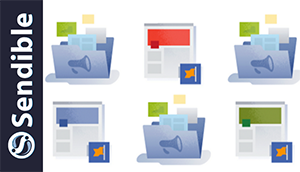— September 16, 2018
It’s no secret that a happy office makes for a productive one. In fact, it’s been observed that happier employees are 12% more productive in the workplace and that people who report being happy at work take ten times fewer sick days than unhappy workers.
Unfortunately, statistics are much better at showing effect than cause, and the notion of creating a strong morale amongst staff is much harder to make a reality.
Many companies focus on personality during the recruitment process and creating a pleasant atmosphere of perks and incentives for those who hit their targets.
But maintaining a happy environment at work requires a commitment in plenty of areas. It might be motivating to offer an exciting bonus for the completion of a project or a profitable year, but without the right infrastructure in place, incentives can only contribute in adding to employee stress.
This is where an intuitive and comprehensive workforce management system comes into play. By having the right software in place to support yourself and your employees, your chances of eliminating staff stress, confusion and communication problems in one fell swoop.
Here, we take a look at how happiness is possible through workforce management software.
Added Communication

suju / Pixabay
Communication is imperative in a happy workplace. Without regular contact between yourself and your team, you run the risk of alienating employees and having them produce insufficient work because of the confusion.
With an employee messaging system that comes built into your workforce management software, you and your staff can stay in touch with ease – making task management and delegation a doddle.
By setting up employee messaging software you can automatically send communications about fire drills, training sessions, request schedule availability, notify employees of the company’s progress and much more. Keeping your workers abreast of any developments within the company has a profound effect on their sense of belonging. Employees will be more aware of the collective goals that they’re working towards and feel more inclined to help out.
The system can also send automatic workload updates to keep staff informed of their what’s expected of them over the coming weeks and months. Again, this works wonders in alleviating concerns from employees wondering about what they should be doing.
Employee messaging software can also be solicited for receiving feedback from your employees – helping them to feel more valued in their contribution and thoughts.
Accurate Payroll
Your employees will be happy and motivated by the prospect of being paid fairly for the work that they put in, and likewise, may become unhappy if they observe colleagues abusing their schedules while being awarded the same salary.
Workforce management deploys an automated clocking system that can be utilised either online or via a smart device, which records your workforces’ time at their desk and monitors any excessive abuse of the system.
There are few things more disruptive in a working environment than an employee who’s perceived to be continually getting away with poor attendance and lateness. So it’s great news for employers everywhere that through workforce management systems you can actively monitor a staff member’s clocking-in record and generate accurate data for an employee’s whereabouts in real-time.
This software is designed to be compatible with 3rd party payroll software too, so you can guarantee that every worker is paid the right amount – keeping your staff happy and content that everyone’s being paid the right amount for their performance.
Scheduling Based on Skillsets
There’s no faster way to leave a valued member of staff feeling inadequate and alienated than by forgetting about their skillsets and placing them on a project that they’re unprepared for.
To counter this, there’re tools like Mitrefinch and Tanda that organise your workforce by their training and skills – as well as their department and shift schedules.
This type of software is essential for businesses that require workers that are flexible in the kinds of jobs they can do, and are able to switch between projects to put more hands on deck.
You can also use these to identify members of staff who could benefit with some additional training.
Skill-based scheduling is a sure-fire way of maintaining high morale within the workplace thanks to the staff who won’t be overawed by being placed on jobs where others may be more adept at undertaking.
Bringing a happy atmosphere into your workplace may be a tall order, but a competent workforce management system makes for an excellent cornerstone to build from.
Business & Finance Articles on Business 2 Community
(86)







